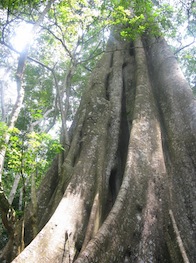Valentine's Day Roses Bought in UK Could 'Bleed Lake Naivasha Dry,' Warns Ecologist
ScienceDaily (Feb. 11, 2011) — A University of Leicester ecologist who has spent over 30 years researching wetland conservation at Lake Naivasha in Kenya has warned that the country is being "bled dry" by the UK's demand for fresh flowers. He called on UK supermarkets to show more concern about the health of the natural environment that the flowers come from.
Dr David Harper, of the Department of Biology, University of Leicester, has been working at Lake Naivasha as part of ongoing research and projects on the ecosystem of lakes in Kenya.
Dr Harper said UK supermarkets should do more than simply selling "Fair Trade" roses. They should look beyond the farm gate at the sustainability of the natural resource that feeds the flowers -- Lake Naivasha.
He said: "A notable few of the farmers sending roses to Europe are showing concern and an eagerness to pioneer a sustainable way forward: the best flower farms have achieved Fair Trade status, which brings money back into the workforce for social welfare improvements. Two farms have even seconded senior managers to help Kenya's water management agency at Naivasha."
He warned that increased UK supermarket promotions of flowers over Valentine's Day, and subsequently on Mother's Day, without showing concern about where or how environmentally sustainable roses can be grown, will just increase the export of water -- the scarcest natural resource in Kenya.
"There are just a few good farms but many more that don't care how much damage they do to the lake. Seventy percent of the roses sold in European supermarkets come from Kenya and the majority of those are from Naivasha, many thus coming without any ecological certification. This has to change for the future of the industry as well as the lake and the country," said Dr Harper.
Switzerland is the only country in Europe that cares about selling environmentally sustainable Kenyan roses, says Dr Harper, because the Swiss Coop -- its largest supermarket -- recycles some of its profits to fund sustainability projects at the lake.
He said: "Over the past 20 years, Lake Naivasha has been seriously degraded by over-abstraction of water. The blame has invariably been put onto flower farmers, who use irrigation to grow the roses that adorn the vases in our homes -- especially on Valentine's Day and Mother's Day.
"The ecology of the lake has deteriorated due to lack of government enforcement of the laws that regulate water abstraction, prevent over-fishing or stop clearance of wetland vegetation."
"The European supermarket leader on sustainability issues -- the Swiss Coop -- is now putting money from its profits into a feasibility study for a project, led by me and Dr Caroline Upton, a Social Scientist from the Geography Department and our PhD student, Mr Ed Morrison, which will address key issues of sustainability of the whole lake basin with key local partner organisations. These include the Kenya management agency responsible for water abstraction, local conservation groups with whom we has worked for years and an innovative new NGO, making educational films teaching people, including flower farm workers, about water and sustainability."
Dr Harper would love to see UK supermarkets following the Swiss Coop's initiative, as the German-Austrian supermarket REWE is considering doing.
"The Kenyan Government, whom I have advised through the Prime Minister's Office, has launched "Imarisha Naivasha," a campaign to bring all parties together to change damaging behaviours and enforce laws. People who live and work around the lake are showing concern and eagerness to be taught a sustainable way forward. The few farms have led the way with innovations like hydroponics for growing flowers in minimal water and wetland systems for wastewater treatment.
"But what are UK supermarkets doing?" I see nothing positive, just plenty of platitudes. The Swiss Coop is the only supermarket to look beyond the farm gate, accepting that there cannot be sustainable roses from a failing lake system, no matter how many with Fair Trade status are grown. The Swiss Coop can see that sustainable roses must come from a sustainable lake ecosystem and not just a well-run farm. It's a pity that British supermarkets are so short sighted that they cannot see this too."
Dr Harper called for UK supermarkets to accept more responsibility by promoting sustainable management policies that reach beyond the farms and help to conserve the ecosystem which will allow flowers (and profits) to flourish beside a healthy, restored lake. If the flowers they sell could show a 'water ecological footprint' customers might be able to choose more discerningly, as they presently are seeking to do with food miles.
See also.....Cheap Roses Costs The Earth
Story Source:
The above story is reprinted from materials provided byUniversity of Leicester. Science Daily.








